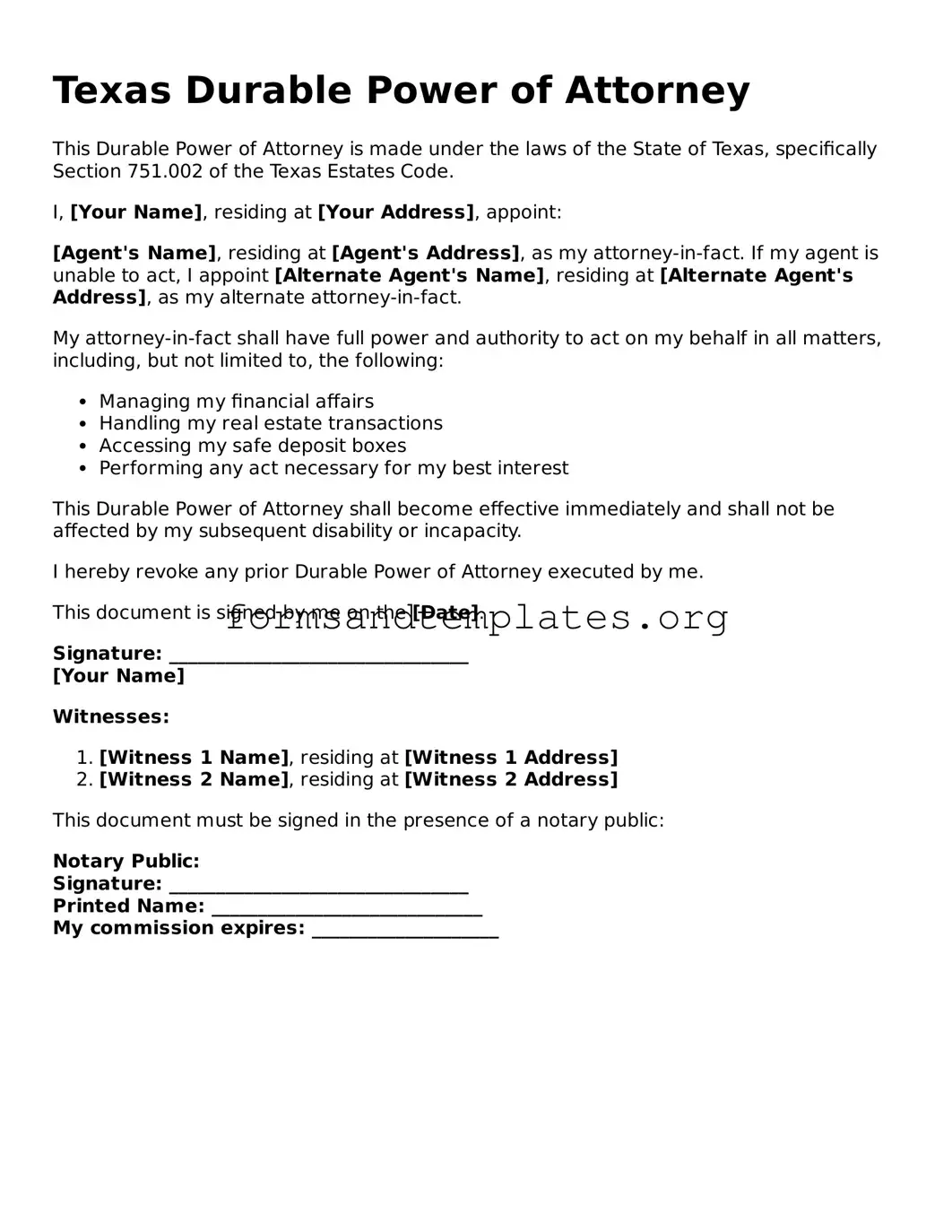Texas Durable Power of Attorney
This Durable Power of Attorney is made under the laws of the State of Texas, specifically Section 751.002 of the Texas Estates Code.
I, [Your Name], residing at [Your Address], appoint:
[Agent's Name], residing at [Agent's Address], as my attorney-in-fact. If my agent is unable to act, I appoint [Alternate Agent's Name], residing at [Alternate Agent's Address], as my alternate attorney-in-fact.
My attorney-in-fact shall have full power and authority to act on my behalf in all matters, including, but not limited to, the following:
- Managing my financial affairs
- Handling my real estate transactions
- Accessing my safe deposit boxes
- Performing any act necessary for my best interest
This Durable Power of Attorney shall become effective immediately and shall not be affected by my subsequent disability or incapacity.
I hereby revoke any prior Durable Power of Attorney executed by me.
This document is signed by me on the [Date].
Signature: ________________________________
[Your Name]
Witnesses:
- [Witness 1 Name], residing at [Witness 1 Address]
- [Witness 2 Name], residing at [Witness 2 Address]
This document must be signed in the presence of a notary public:
Notary Public:
Signature: ________________________________
Printed Name: _____________________________
My commission expires: ____________________
